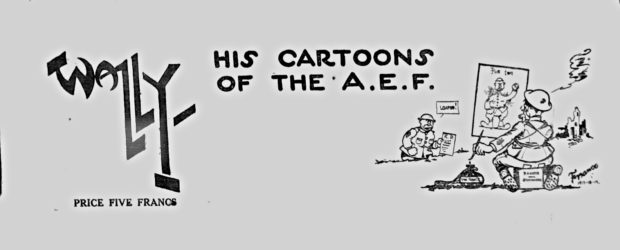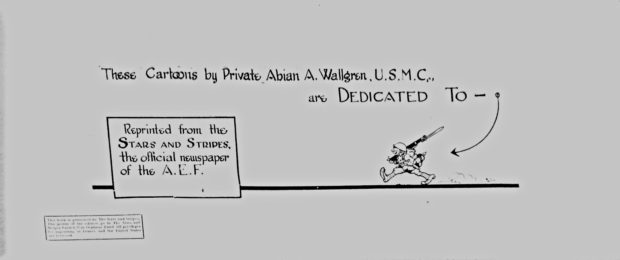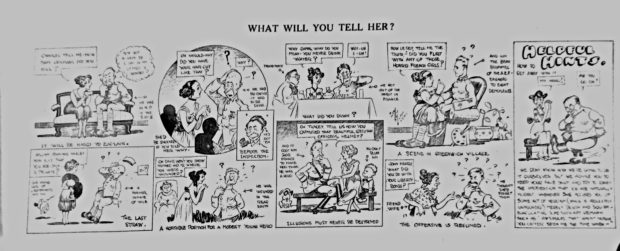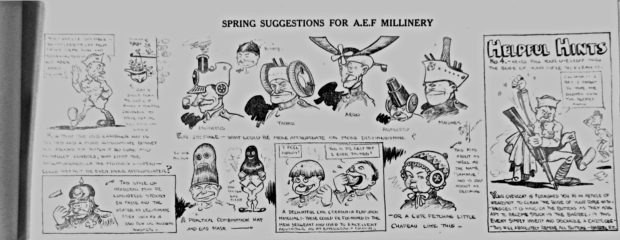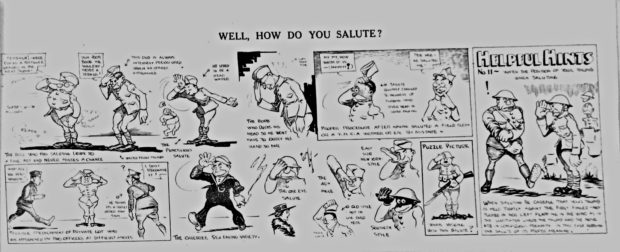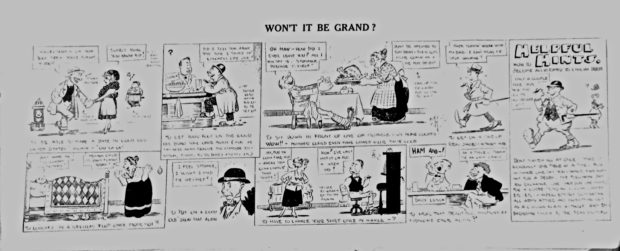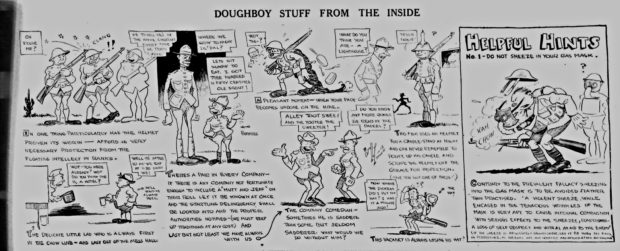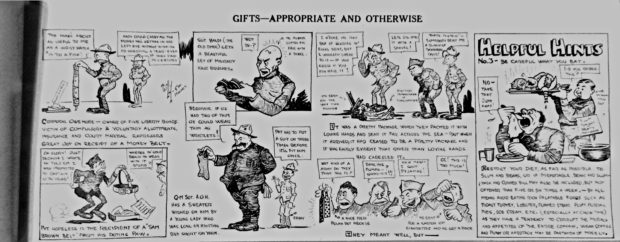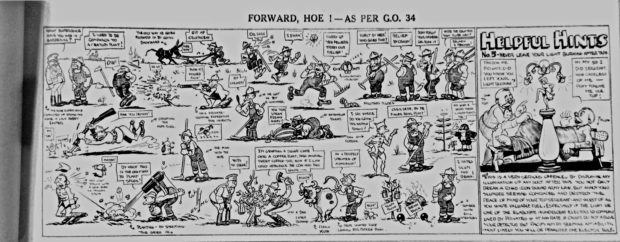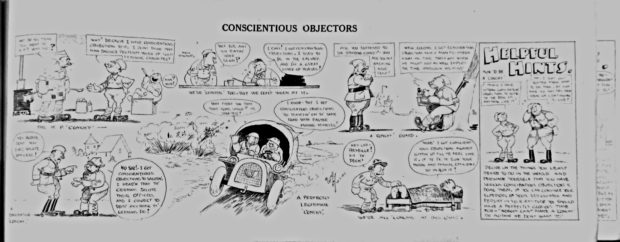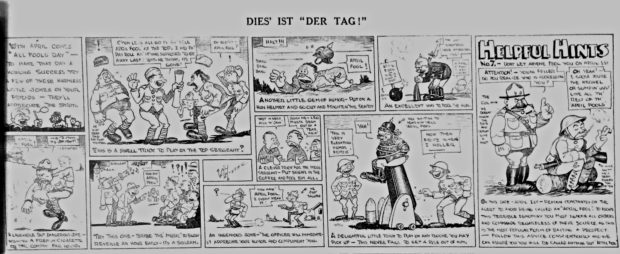Comics were a part of the daily life of Connecticut’s men who served in the Great War. Doughboys anticipated the arrival of American military papers not only for the news they delivered regarding the home-front and various military happenings, but also for the beloved comic strips they contained. American soldiers relished cartoons as a form of escape from the devastation of their surroundings. Comics, such as these drawn by Private Abian A. ‘Wally’ Wallgreen for Stars and Stripes, engaged soldiers by referencing the daily experiences of military life with a goofy, slapstick sensibility that introduced a welcome lightheartedness to the dark reality of war.
In one strip titled “Feats with Feet,” Wallgreen brings humor to the heavy concepts of violence, love, class, loyalty, fear, injury, and illness. As in many other wars before and after WWI, inadequate and ill-fitting footwear proved to be one of the soldier’s primary sources of misery during the Great War. A particularly horrific example of this known as “trench foot” afflicted soldiers whose feet were exposed to unhygienic, damp, or cold conditions for a sustained period of time. Those with trench foot felt helpless as their feet went numb, turned red or blue, gave off a smell of decaying flesh, and developed sores, infections, and ulcers, and often gangrene. “Feats with Feat” sarcastically dubs “cold feet” and “flat feet” with the title “useless feet,” noting that cold feet represent a “species unknown in A.E.F.” while depicting a pair of boots running from the front lines “to the rear.” A different pair of “slacker feet” (equipped with heels and spats and positioned next to a well-shod pair of “pacifist feet”) earn the label: “worst form of cold feet.”
“Feats with Feet” also taps into hopes and fears that soldiers commonly harbored regarding their enemies. One cartoon depicting an American in uniform gleefully sprinting towards Berlin reads, “Point your feet in the right direction and follow them— any other direction is very rough on the feet,” while a different image, labeled “proper position for spy feet,” depicts the dangling boots of a man hung for treason. In another, the kick of a vigorous American boot sends a rotund German soldier flying through the air along with his helmet, medal, and eyeglasses. This “soothing exercise for the feet, known as ‘Booting the Boche,’” which the caption notes “is gaining rapid popularity” reflects the slapstick humor widely appreciated during this era (one may note that Gummo Marx of the Marx Brothers served in WWI).
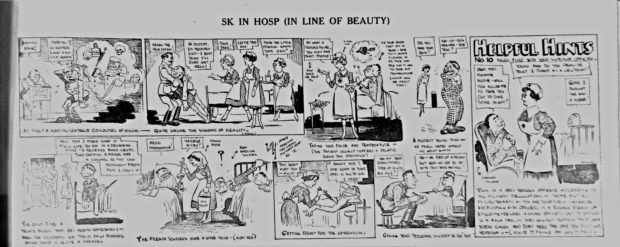
The caption “Be careful what feet your feet associate with, as some feet are very contagious” slides beneath the toes of an attractive pair of ladies boots, coyly turned towards the rugged footwear and puttees of a smitten doughboy. The longing for female company that Wallgreen hints at in this cartoon appears again in another of his strips entitled “‘Sk In Hosp’ (In Line of Beauty).” Here, hospital-bound soldiers engage in an assortment of shenanigans designed to win the affections of their beguiling nurses. Wallgreen once again renders a painful struggle faced by soldiers— sustained separation from wives and girlfriends and the horrible loneliness that ensued— with heartening levity.
Americans in the trenches who so avidly consumed cartoons did not interpret their jocularity as a dismissal of their suffering but as a break from the drabness and terror of Verdun, the Somme, or Ypres. The fact that so many of these cartoon strips remain preserved a century after their publication testifies to the significance that servicemen attached to them. Connecticut’s archival repositories boast an assortment of such material; this collection of Wallgreen’s work may be found in Yale University’s Manuscripts and Archives in Sterling Memorial Library.
Wallgren, Abian A. Wally. His cartoons of the A.E.F. (Paris, The Stars and Stripes) [54 leaves illustrated]. 1919. The World War I Collection, box 1, Manuscripts and Archives, Yale University Library.

